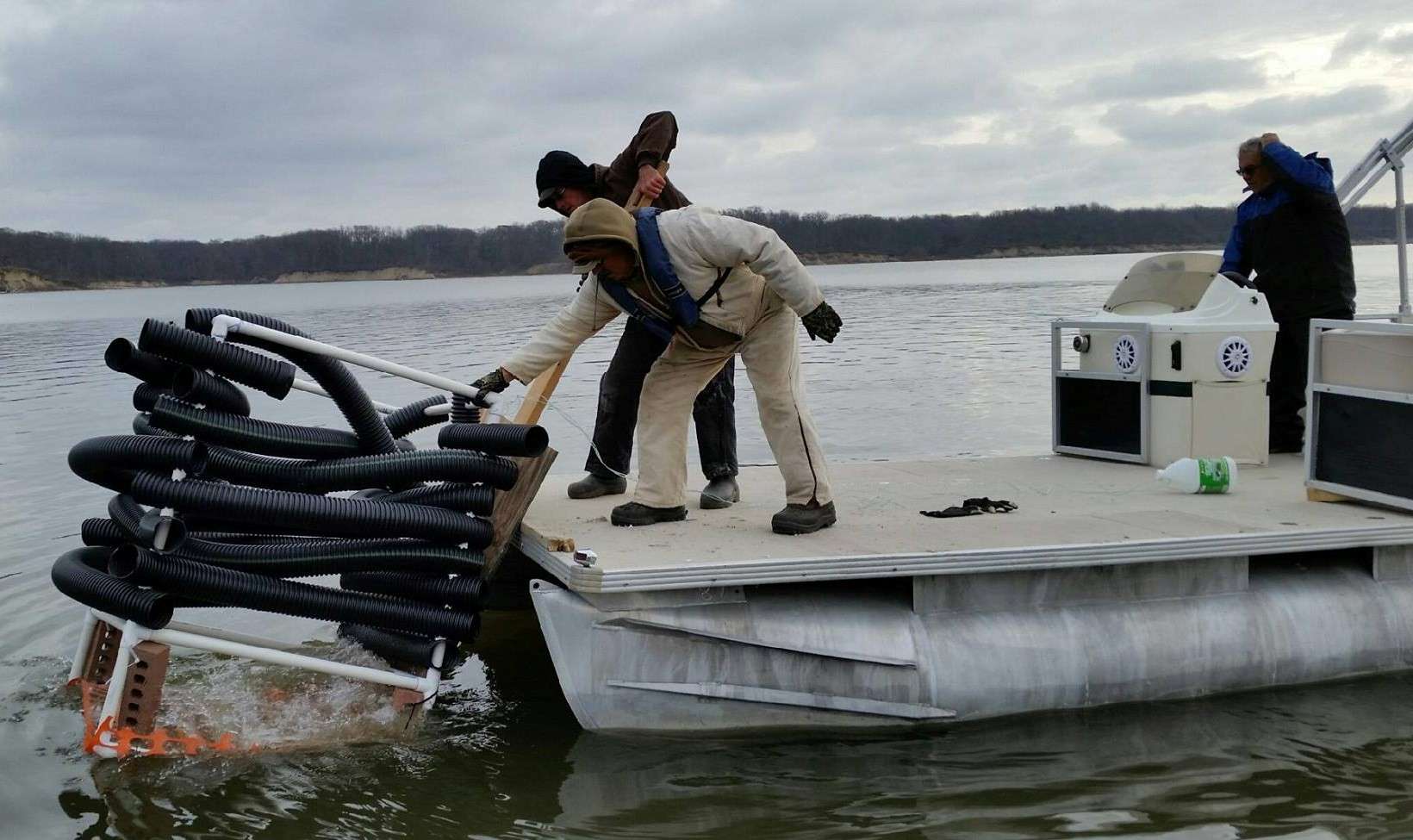
SHELBYVILLE, Ill. – An ambitious grassroots project to improve bass habitat at Lake Shelbyville will get even more ambitious this fall, when financial assistance arrives as a $30,000 grant from Friends of Reservoirs.
In anticipation of that boost, the Lake Shelbyville Habitat Alliance (LSHA) met in spring to discuss use of that money, as well as strategize about how to obtain additional funding, according Kevin Robertson, a life member of B.A.S.S. and alliance volunteer.
“We are working out the details on an ‘Adopt-a-Cube’ program among other things,” he said.
“We’ve had two builds this year, with a total of 50 cubes built and placed in the lake. Three more builds are planned for another 150 cubes. We’ve been experimenting with a couple of updates to the design to help cut costs, as well as a couple of designs for completely different structures.”
Additionally, hundreds of Christmas trees were sunk in early spring.
Last year, about 150 structures were added to the 11,000-acre fishery that has lost most of its woody habitat since it was created nearly 50 years ago. The goal is to make and place 1,000 cubes in 10 years.
“Most of it (woody habitat) has rotted away,” said Martin “Chip” Christensen, owner of Chip’s Marine. “Then you’ve got water level fluctuations and ice that destroys it.”
That flood and freeze cycle has eroded shorelines and eliminated vegetation and brush. And as that habitat has disappeared, the fishery has declined. Largemouth Bass Virus also is believed to have contributed, according to biologist Mike Mounce.
Along with the Army Corps of Engineers, Illinois Department of Natural Resources (IDNR), and volunteers such as Robertson, Christensen intends to revitalize the fishery. Additionally, the alliance, with help from the Illinois Natural History Survey, is assessing effectiveness of the added habitat.
Robertson credits the marina owner with being the primary catalyst for the project on this Kaskaskia River impoundment.
“The project has grown from Chip’s vision and desire to see Lake Shelbyville improve,” he said, adding that Christensen “footed the bill” for the first Shelbyville variations of Georgia cubes placed in the fishery.
Since he had some free time, the marina owner acknowledged, he decided to build a prototype.
“It was approved, and then we started raising money and the Corps provided supplies,” he added. “I donated the location, where we built them, and (money) when we were short. But it’s just taken off from there, and we’ve had a lot of help.”
IDNR’s Mounce added, “We’ve had a great response from fishermen. It’s vitally necessary. We wouldn’t get an eighth of this done without them.”
Both Robertson and Christensen want to get members of high school and college fishing teams to join the effort.
“We’re hoping to get young anglers involved so they learn the importance of stewardship and giving back,” Robertson said. “Maybe we can do that in the fall, when school is back in session.”
Christensen added, “I want to get kids involved in habitat work. And it’s up to us to teach them about courtesy and stewardship while they’re doing that. If we want this sport to stay vital, we have to give back.”







